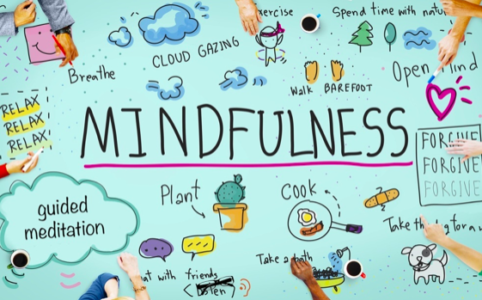Mindfulness: Doubling the Joy of Living

“Yesterday is history. Tomorrow is a mystery. Today is a gift. That is why it is called the present.” — Alice Morse Earle
The days we are angry within, we keep stubbing out toes on furniture, and the days we are smiling, the grandchildren suddenly show up with flowers! It’s almost funny how the universe works. I wouldn’t act like I know the secrets, but surely we can all agree joy is an internal function of the body.
It’s Not About a Reaction from the External
Mindfulness is the practice of completely immersing oneself in one or more sensations, without labelling or judging anything.
Mindfulness transcends meditation. The meditation stops as soon as you leave the scented room, but mindfulness continues to be a part of your day, as a way of life.
Sucking on the mango without looking at the television is… mindfulness. Walking with complete awareness-connection with the soles of your feet… is mindfulness.
De-Sensitizing
The digital age has bought a lot of good things, like video calling. However, sitting hours on end in front of the television (which humans of all ages do) bombards our mind with stimuli: when dealing with so many stimuli, the mind has no choice but to start to desensitize.
For example, to feel joy from an action movie again, you now need one with even more cars blowing and even more punches-to-the-teeth.
With mindfulness, you are practicing sensitizing back to life. This is a good practice for all ages, and in my opinion the best counter to the big bane of the digital era.
Taking Joy in Life
One of the symptoms of depression, an ever-growing disease in today’s society, is that one begins to lose interest in activities they once enjoyed, such as socializing or taking walks with the dog.
What we sometimes forget is that we are made of flesh-and-bones, which is by nature sensitive.
For example, as I write this article, in one single moment I can witness:
- Sound: The whirring of the cooler, the rhythmic typing on the keyboard, and the sound of music blasting from the other room
- Sight: The beautiful wooden chair and the matte of the keyboard
- Sensation: The feeling of the typing on the tip of the fingers and the softness of the cotton sheets at my elbows, the very slight pain in my shoulders, because I had gotten up at the wrong side, and the slight nervousness in me, questioning if this article would even be any good!
- Taste: The after-taste of the mango-lassi
- Smell: The staleness in the room in the air
If someone says that mindfulness is boring, they are probably not doing it right!
The Other Side of the Coin
Mindfulness may also bring to awareness several “non-pleasant” feelings. Normally, people would run away from bad feelings. However, during mindfulness, one doesn’t judge the feelings at all and feelings are treated as mere sensations.
Sadness blooms into a deep sensation in the pit of the chest, for example, or hunger may bloom into heat near the kidney.
This will also help the individual bring important signals from the body to attention. For example, you might get aware quicker when you stomach is full, and avoid overeating. Or, you may know that you have been reading on the tablet for too long and avoid a potential headache.
Mindfulness may essentially double the joy in life, and is a practice people of all ages will enjoy!
Disclaimer: This content including advice provides generic information only. It is in no way a substitute for qualified medical opinion. Always consult a specialist or your own doctor for more information.
References:
- The Harvard Gazette, ‘When science meets mindfulness’, official website (accessed on 11th June, 2020)
- US National Library of Medicine, ‘Effects of Mindfulness on Psychological Health’, official website (accessed 11th June, 2020)
